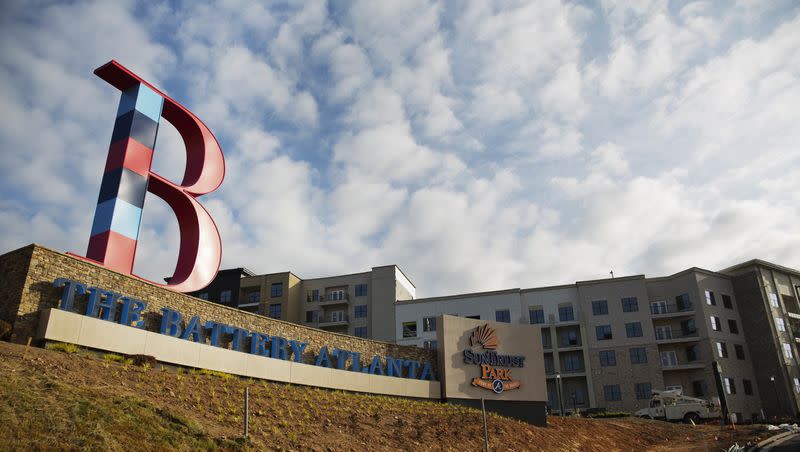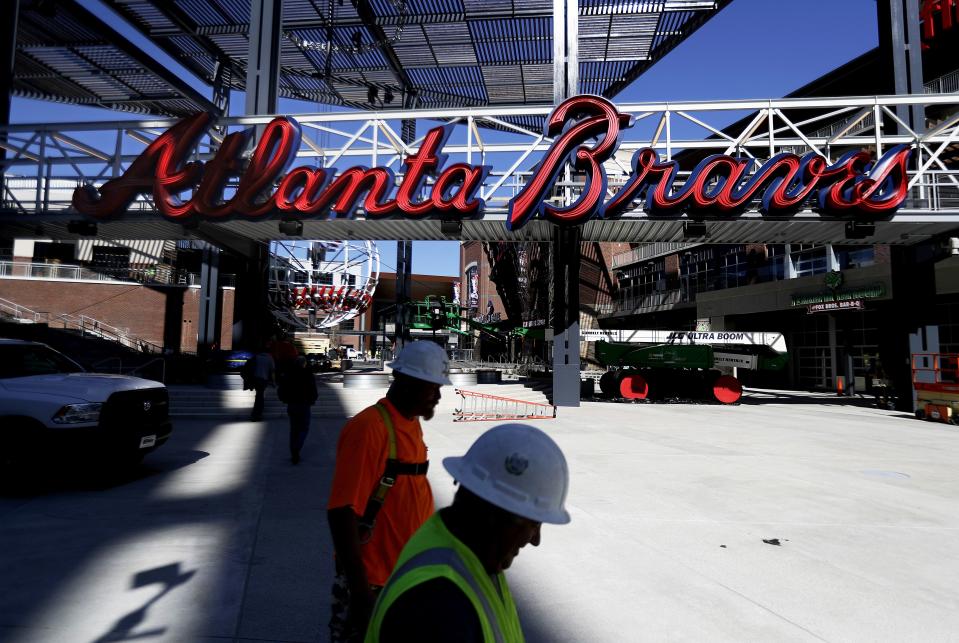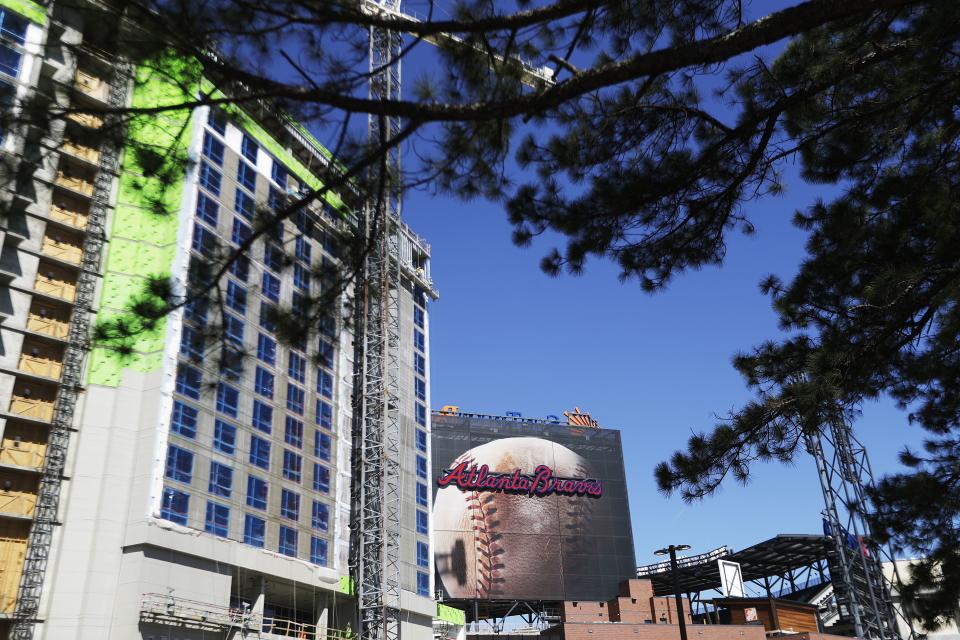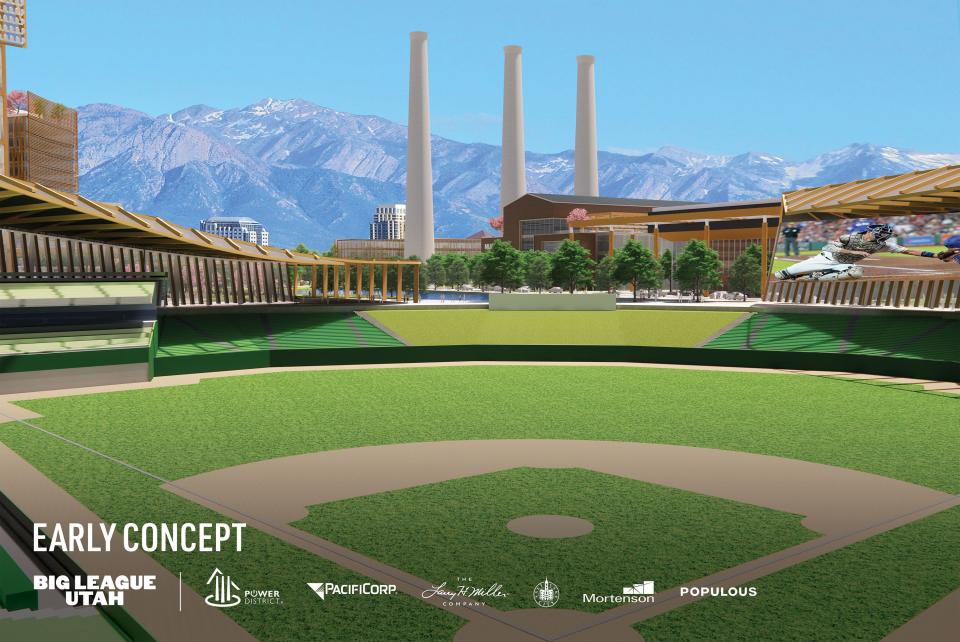Should public funds be used to build an MLB stadium in Salt Lake City?

Construction of a Major League Baseball stadium in Salt Lake City would almost certainly include some public investment for what could be a billion-dollar project.
What form that might take isn’t known yet. Utah government leaders appear averse to diverting taxpayer dollars directly to build a ballpark but acknowledged tax increment financing or a public-private partnership could be options. And whether Utah voters would have a say through a referendum also remains to be seen.
But residents in the Beehive State aren’t totally against putting public money toward a big league stadium.
A new Deseret News/Hinckley Institute of Politics poll found Utahns almost evenly split on the idea, with 47% supporting the use of tax dollars and 50% opposing.
Dan Jones & Associates conducted the survey of 798 registered Utah voters May 22 to June 1. It has a margin of error of plus or minus 3.46 percentage points.

The Larry H. Miller Company announced in April that it has assembled a group of influential Utahns to pursue an MLB team for Salt Lake City. Calling itself Big League Utah, the coalition includes business and community leaders, elected officials and former professional athletes. The Miller company could ultimately head up an ownership group.
MLB Commissioner Rob Manfred wants to expand baseball to 32 teams, but he has said the league won’t consider adding two new franchises until the Tampa Bay Rays and the Oakland A’s resolve ongoing stadium issues. The A’s — the team with the worst record and lowest attendance so far this year — appear headed to Las Vegas. Portland, Nashville, Charlotte and Montreal are possible expansion sites.
Utahns overwhelmingly support the effort to bring a major league team to the state, according to a Deseret News/Hinckley Institute poll in April that found 81% of residents strongly or somewhat favor the idea.
Related
Do Utahns want a major league baseball team? How often would they go to a game?
Gail Miller says MLB pursuit completes the circle on her family’s lifelong connection to baseball
The new survey showed half of men support using public funds to build a stadium compared to 43% of women. Democrats were slightly more willing than Republicans to expend public money, 51% to 48%. Among income groups, those making $25,000 to $50,000 a year were most in favor of committing public dollars at 59%.
Big League Utah has identified a site just west of downtown Salt Lake City in what’s known as the Power District for a stadium. Construction of a ballpark could cost $500 million to $1.5 billion. Most newer major league fields were financed through a public-private partnership.
Steve Starks, Larry H. Miller Company CEO, called bringing a major league team to Salt Lake City a once-in-a-generation opportunity that will require collaboration, thoughtful planning and vision.
“As we have seen in other markets, sports venues can serve as a catalyst for community development. We believe the Power District can do this for Salt Lake’s west side gateway connecting the airport to downtown and we are excited to partner with key stakeholders on this exciting project,” he said in a statement to the Deseret News.
Noting Utahns’ strong support for an MLB team, Republican Gov. Spencer Cox is committed to “doing everything possible” to make it happen, according to his office.
“There have currently been no discussions about financing, but the governor has been clear that protecting taxpayers will always be at the forefront of these discussions. As with any large economic opportunity, when the time is right we will collaborate with the Legislature and local leaders to use existing tools to support bringing a team here, protect taxpayers and give new economic opportunities to those who live on the west side of Salt Lake City,” Jennifer Napier-Pearce, governor’s spokeswoman, said in a statement.
Salt Lake City Mayor Erin Mendenhall, a Democrat, said the city has a strong desire to be home to a major league franchise and is committed to working with the state, county and team ownership. Tax increment financing is a normal part of business for the Salt Lake City Redevelopment Agency, she said.
“Since the Power District property is located within the bounds of the Redevelopment Agency’s North Temple Project Area, its redevelopment could potentially qualify for RDA financial tools such as the loan and tax increment reimbursement programs. As we learn more about the costs and benefits of a future stadium, the city may be able to bring other options into the discussion,” the mayor said in a statement to the Deseret News.
Related
Does an MLB stadium need public money?
Andrew Zimbalist, a Smith College economist who consults in the sports industry, told the Deseret News last month that he doesn’t see a deal getting done for a major league team without public money, “especially in Salt Lake City.” Smaller markets need 60% to 70% public financing to make it work, he said.
While the Salt Lake City metro area with a population of 1.2 million is relatively small, the combined statistical area from Ogden to Provo has 2.7 million people.

Backers of Salt Lake City’s effort to land a team point to Truist Park in Atlanta and the adjacent The Battery Atlanta, a mixed-use development and entertainment district, as the blueprint for what they envision in Utah.
In Atlanta, the sixth largest professional sports market in the country, public funding covered 45% of the initial cost for the Braves stadium that opened in 2017. Salt Lake City is the 29th largest market, per Nielsen television ratings.
The ballpark, which drew 3.1 million fans to Braves’ games last year, had an initial budget of $672 million to construct, with $300 million coming from Cobb County taxpayer funds in the form of a 30-year bond approved by county commissioners. The Braves and their partners built the $400 million Battery.
It has become a year-round destination that has spurred continued growth in the area. Overall, visitors to The Battery Atlanta and Truist Park numbered 10 million last year, which hosted 492 on-site events, including 84 concerts and 83 Braves games.

Last month, Cobb County officials reported that the complex ended 2022 as a net positive for taxpayers, generating more property tax revenue than the county’s portion of the debt service for the first time since it opened. The county’s finance director called the $400,000 gain a “milestone.” The stadium and development pumped $38 million in tax revenue to the county, state and local school district last year.
Reaching that mark seven years into a 30-year bond is a “game changer,” Mike Plant, president and CEO of the Braves Development Company, told the Deseret News.
“We’re a great example of what can be done. The results are there,” he said.
Plant said 200 sports teams from around the world have toured the Battery and Truist Park.
“We think we have the secret sauce, and they believe that too,” Plant told Cobb County officials in a recent meeting. “If you don’t have that public-private partnership working together, you will fail.”
Plant, a part-time Park City resident, recently spent an afternoon with a dozen Utah leaders, including the Millers, at the complex in Atlanta.
Salt Lake City, he said, “absolutely” could replicate what the Braves are doing but not with a cookie-cutter approach. He said the project must be based on research to determine what the city might be missing in the way of development and entertainment.
“Salt Lake, just like every other market, has the ability to create an authentic environment that addresses some need that doesn’t exist there,” he said.

Should cities own stadiums?
In Arlington, Texas, voters approved a $500 million bond for the construction of the $1.2 billion air-conditioned, retractable roof Globe Life Field, home of the Texas Rangers. The Rangers put up the remaining $700 million.
A half-cent of sales tax, 2% hotel occupancy tax and 5% car rental tax goes to pay off the bonds over about 30 years. Voters also approved a ticket tax of up to 10% and parking tax of up to $3 at the new stadium, which opened in 2020.
“They have believed in and supported the power of tourism and sports-anchored development in Arlington,” Trey Yelverton, city manager, said of residents.
Though Arlington has only 400,000 people, it sits between the 8 million who live in Dallas and Fort Worth.
Under the agreement, the city owns the ballpark and the Rangers rent it for $2 million a year. The team also pays all operational costs.
“You can think of it like I gave $500 million to the Rangers or you can think of it like the Rangers gave us $700 million for a $1.2 billion stadium,” he said. “It’s a capital-sharing kind of arrangement.”
Yelverton said more than half of the sales tax collected in Arlington comes from outside the city. Also, taxes on hotel rooms and car rentals are generated from people who don’t live there. In addition to using the money to pay off the bonds, it helps provide essential city services, he said.
“Why does the city do it? It’s not because we love baseball, even though we do, it’s because we’re expected to provide certain levels of services to our residents. They want the 911 calls answered. They want the potholes fixed,” he said.
Yelverton said he knows public investment in stadiums is highly debated across the country, but in Arlington’s experience it has proved a sustainable level of revenue for the city. “It’s a model that works for us,” he said.
In Nevada, Gov. Joe Lombardo, a Republican, announced in late May that the state and Clark County had reached a tentative deal to bring the Oakland A’s to Las Vegas. It includes construction of a $1.5 billion, 30,000-seat retractable roof stadium.
Nevada lawmakers adjourned Tuesday without passing legislation to provide $380 million in public funding for a new ballpark. The state would contribute $180 million transferable tax credits, half of which would be repaid with tax revenue generated by the stadium under the plan. Clark County would provide $120 million in mostly bonds that would be paid off over 30 years. The proposal does not directly raise taxes.
The bill didn’t appear to have much public support. According to the Nevada Legislature’s website, 72% of respondents to an online survey oppose the measure, while 26% favor it. Because anyone can submit their position on the bill, it’s unclear how many of the more than 2,300 submissions are Nevada residents.
The Legislature now will have to meet in special session to consider public funding for a stadium.

